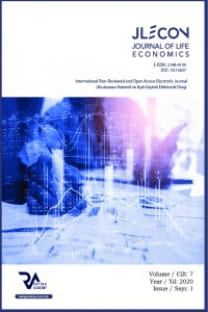IMPLICATIONS OF THE WAR ON THE ECONOMY AND SOCIAL WELL-BEING OF DONBAS
The political crisis that resulted in unrest in the Donetsk and Luhansk regions of Ukraine evolved into a war between the post-revolutionary Ukrainian government and pro-Russian insurgents. A large-scale military conflict has undoubtedly produced an extremely negative impact on the country's economic potential, not very strong as it was. It encompasses both the outcomes of the direct destruction of the economy in the region – both the occupied areas and those controlled by Ukraine – and problems caused to enterprises directly connected with it. Implementation of an entire range of long-due political, social and economic reforms at present opens the window of opportunity to a radical response, but at the same time requires very precise coordination of specific innovations addressable specifically to Donbas, with the universal ones to be applied throughout Ukraine, and with the commitments that the state undertook within the EU association. Lack of resources considerably limits the possibilities to channel budget funds for Donbas recovery; expectations of foreign investment may not materialize, therefore extremely important is the mobilization of funds of the population
Anahtar Kelimeler:
Conflict; Donbas Economy; War implications; Ukraine
IMPLICATIONS OF THE WAR ON THE ECONOMY AND SOCIAL WELL-BEING OF DONBAS
The political crisis that resulted in unrest in the Donetsk and Luhansk regions of Ukraine evolved into a war between the post-revolutionary Ukrainian government and pro-Russian insurgents. A large-scale military conflict has undoubtedly produced an extremely negative impact on the country's economic potential, not very strong as it was. It encompasses both the outcomes of the direct destruction of the economy in the region – both the occupied areas and those controlled by Ukraine – and problems caused to enterprises directly connected with it. Implementation of an entire range of long-due political, social and economic reforms at present opens the window of opportunity to a radical response, but at the same time requires very precise coordination of specific innovations addressable specifically to Donbas, with the universal ones to be applied throughout Ukraine, and with the commitments that the state undertook within the EU association. Lack of resources considerably limits the possibilities to channel budget funds for Donbas recovery; expectations of foreign investment may not materialize, therefore extremely important is the mobilization of funds of the population
___
- ANGELOVSKI, D. (2015), Socio-Economic Impact and ends assessment-Donbass-Ukraine, FAO, United Nations.
- ASLUND, A. (2014), Is it possible to salvage the economy of Donbas? Peterson Institute for International Economics (Available on: https://www.piie.com/publications/opeds/print.cfm?ResearchId=2717&doc=pub (Data Accessed on 16 April 2016).
- BIRD, M., VDOVII, L. and TKACHENKO,Y.. The Donbass Paradox: Russian-backed separatists have plundered the rebel-held regions in Ukraine’s industrial heartland and created an economy stricken with fear, hypocrisy and contradiction. (Available on: http://www.theblacksea.eu/donbass/ (Data Accessed on 17 April 2016)
- BUGRIY. M. and TRETIAK, T. (2015). Destruction of Donbas economy supports local Russia-backed ‘insurgency’. Eurasia Daily Monitor (Available on: http://www.ukrweekly.com/uwwp/destruction-of-donbas-economy-supports-localrussia-backed-insurgency/ (Data Accessed on 17 April 2016)
- EUROPEAN COMMISSION, Humanitarian Aid and Civil Protection-Ukraine (Available on: http://ec.europa.eu/echo/files/aid/countries/factsheets/ukraine_en.pdf (Data Accessed on 15 April 2016)
- KIRCHNER, R. and GIUCCI, R. (2014), The Economy of the Donbass in Figures, The Institute for Economic Research and Policy Consulting, Germany.
- MINISTER OF FINANCE OF UKRAINE (2016) (Available on: http://index.minfin.com.ua/index/average/ (Data Accessed on 19 April 2016).
- Yayın Aralığı: Yılda 4 Sayı
- Başlangıç: 2014
- Yayıncı: Rating Academy
Sayıdaki Diğer Makaleler
TOPLUMSAL CİNSİYET EŞİTSİZLİĞİ EKSENİNDE KADIN İSTİHDAMI VE EKONOMİK ŞİDDET
IMPLICATIONS OF THE WAR ON THE ECONOMY AND SOCIAL WELL-BEING OF DONBAS
Francisco F. R. Ramos, Olena O. Kovalenko
ANALYZING OF THE VALIDITY OF ENERGY-GROWTH HYPOTHESIS IN N-11 COUNTRIES
Ebru ÇAĞLAYAN AKAY, Zamira OSKONBAEVA
GLOBAL ECONOMIC CRISIS AND EFFECTIVENESS OF PUBLIC SPENDING: THE EU PRACTICE
Simla GÜZEL, İşın KIRIŞKAN ÇETİN
INNOVATIVE ENERGY DEVELOPMENT BASED ON THE INTELLIGENT NETWORKS OF SMART GRID CONCEPT
FIRM’S DIVIDEND DECISION IN INDONESIA:CATER OR MATURE ?
Novi S. Budiarso, Winston Pontoh
TURKEY AND THE EUROPEAN UNION: PROBLEMS AND PERSPECTIVES OF A RESILIENT RELATIONSHIP
Oleno O. Kovalenko, Francisco F. R Ramos
